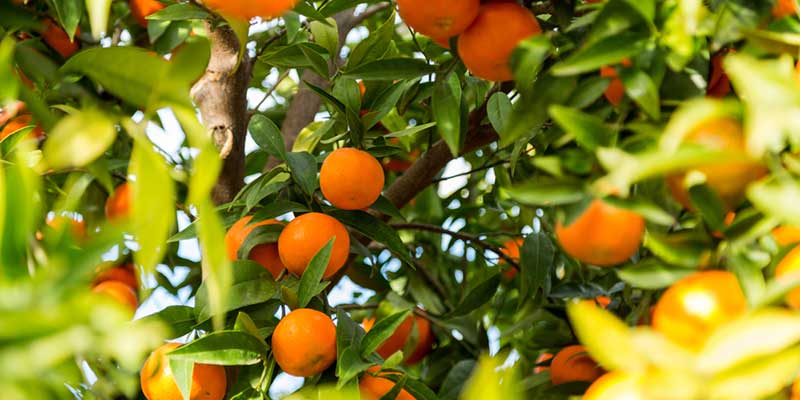Clementines are a citrus hybrid cross between a mandarin orange and a sweet orange. Clementines are extremely high in vitamin C and low in calories.
They are small, usually seedless, and sweeter than other citrus varieties, making it the perfect convenient snack to grab at the office. When they’re in season, they are deliciously juicy and affordable.
When Are Clementines in Season?
Clementines are in season relatively shorter than other citrus fruit varieties. The peak season for clementines is from early November to late January. Three different types of clementines exist:
- Seedless clementines
- Clementines (these contain up to 10 seeds)
- Monreal clementines (these contain greater than 10 seeds)
When and Where Are Clementines Harvested?
Clementines are more sensitive to temperature than other citrus varieties grown in Texas. Because of this, Clementines are a lesser-grown crop when compared to more frequently grown citruses such as tangerines.
Most clementines in the United States are grown in California, where they can begin to be harvested from mid-October all the way through the winter and early spring.
How Long Do Clementines Last?
If you’re wondering how long clementines are good for, we’ve got that question covered too. At room temperature, clementines will keep for up to a week. Make sure you store them in a cool, dry place with plenty of ventilation. In the fridge, clementines will keep for up to two weeks.
Wherever you store clementines, avoid putting them in airtight containers, as this will speed up the ripening process and make them soften or spoil faster. If they seem soggy or have abnormal spots or coloring, throw them out immediately.

Are Clementines Mandarins?
Clementines are a variety of mandarin oranges. They are the smallest variety in the mandarin family. Other varieties in the mandarin family include the Dancy tangerine, Kara, Murcott, Satsuma, and much more.
Therefore, all clementines are mandarins, but not all mandarins are clementines! Also, despite common misunderstandings, mandarins are a type of orange.
What Nutritional Benefits Do Clementines Offer?
As mentioned earlier, the best nutritional benefit a clementine can offer is the high amount of vitamin C. In fact, the average clementine contains around 35 mg of vitamin C. The daily recommended amount of vitamin C for the average adult is 65-90 mg a day. Just two or three clementines will put you well within this range!
Other nutritional benefits clementines offer include calcium, phosphorous, fiber, and potassium to help you follow a healthy and balanced diet. Having healthy snacks for office workers promotes healthy habits and boosts morale.
Clementine Recipes
If you think eating clementines by themselves is a little too boring, you should know they make excellent additions to dishes, raw or cooked. Add them to some yogurt for a quick snack or toss them into your salad to add some bursts of sweetness.
You can also use clementines as a glaze for fish or chicken. Any time a recipe calls for citrus fruit, clementines can be used as an alternative if you’re trying to exhaust a case before they spoil.


